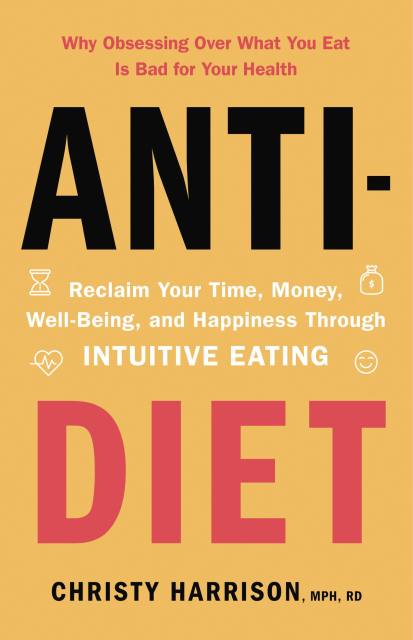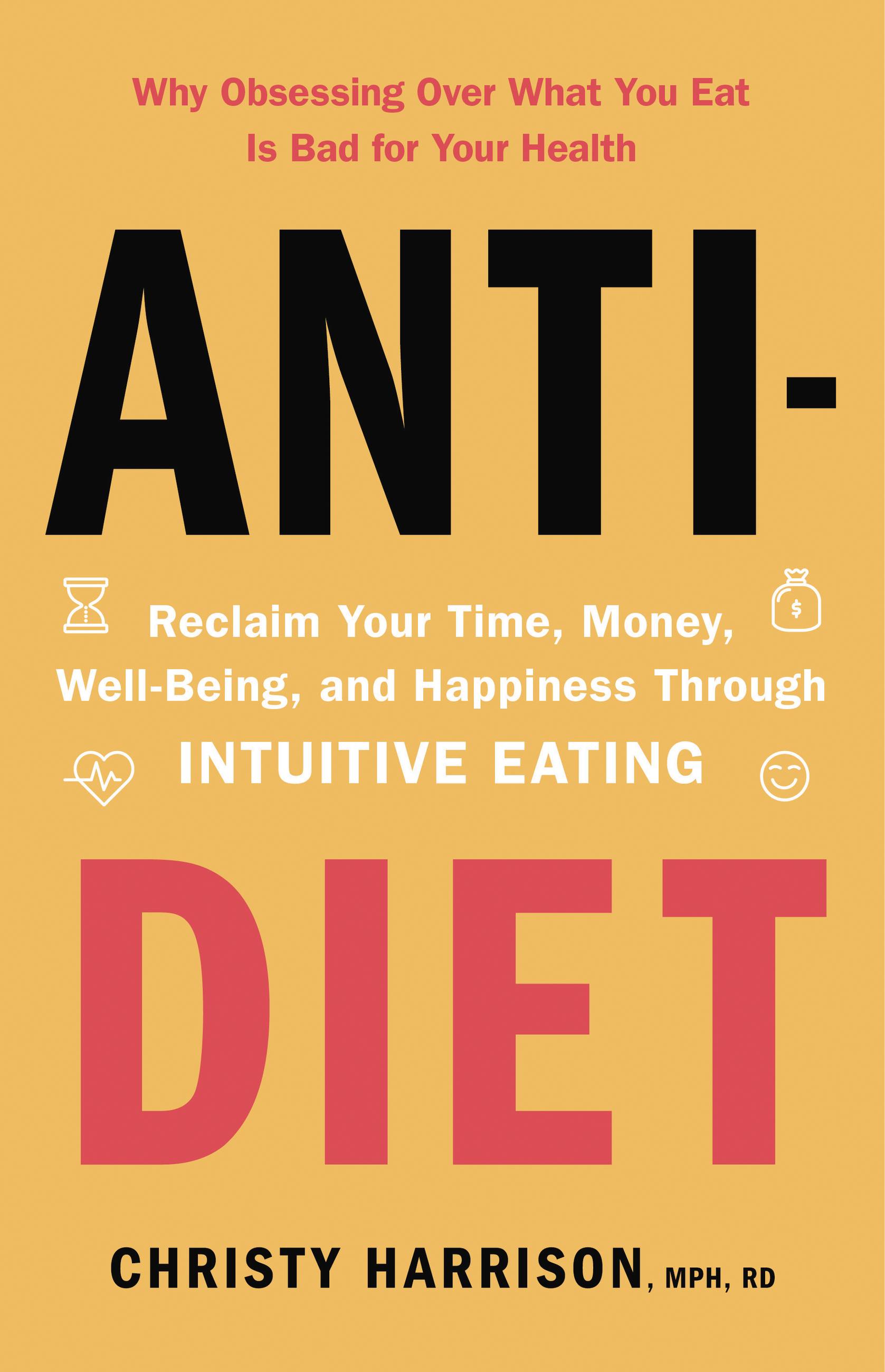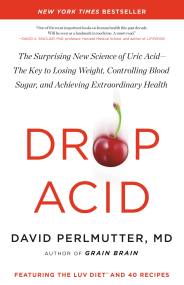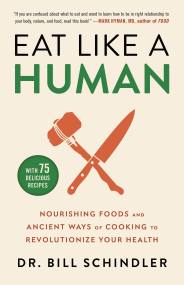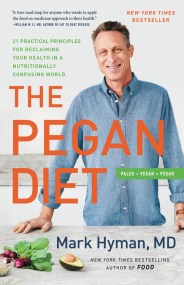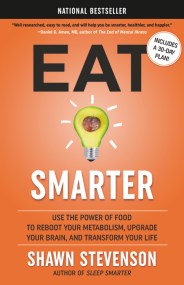Promotion
Use code MOM24 for 20% off site wide + free shipping over $45
Anti-Diet
Reclaim Your Time, Money, Well-Being, and Happiness Through Intuitive Eating
Contributors
Read by Christy Harrison
Formats and Prices
Format
Format:
- Audiobook Download (Unabridged)
- ebook $11.99 $15.99 CAD
- Trade Paperback $19.99 $25.99 CAD
This item is a preorder. Your payment method will be charged immediately, and the product is expected to ship on or around December 24, 2019. This date is subject to change due to shipping delays beyond our control.
Also available from:
Reclaim your time, money, health, and happiness from our toxic diet culture with groundbreaking strategies from a registered dietitian, journalist, and host of the Food Psych podcast.
68 percent of Americans have dieted at some point in their lives. But upwards of 90% of people who intentionally lose weight gain it back within five years. And as many as 66% of people who embark on weight-loss efforts end up gaining more weight than they lost. If dieting is so clearly ineffective, why are we so obsessed with it?The culprit is diet culture, a system of beliefs that equates thinness to health and moral virtue, promotes weight loss as a means of attaining higher status, and demonizes certain ways of eating while elevating others. It's sexist, racist, and classist, yet this way of thinking about food and bodies is so embedded in the fabric of our society that it can be hard to recognize. It masquerades as health, wellness, and fitness, and for some, it is all-consuming.
In Anti-Diet, Christy Harrison takes on diet culture and the multi-billion-dollar industries that profit from it, exposing all the ways it robs people of their time, money, health, and happiness. It will turn what you think you know about health and wellness upside down, as Harrison explores the history of diet culture, how it's infiltrated the health and wellness world, how to recognize it in all its sneaky forms, and how letting go of efforts to lose weight or eat "perfectly" actually helps to improve people's health—no matter their size. Drawing on scientific research, personal experience, and stories from patients and colleagues, Anti-Diet provides a radical alternative to diet culture, and helps readers reclaim their bodies, minds, and lives so they can focus on the things that truly matter.
Genre:
-
"Nutritionist Harrison, host of the podcast Food Psych, debuts with this impassioned and articulate plea for readers to reject 'diet culture' and reclaim their lives...Harrison's enlightening, heretical tract provides a new perspective on the dieting narrative which many take as gospel truth."Publishers Weekly
-
"Anti-Diet is the 'diet' book you need to read headed into 2020. If you've been gearing up to embark on yet another diet, protocol, reset or reboot come Jan. 1, I have a different suggestion: Hit the pause button on that plan and read Christy Harrison's book. Harrison, a registered dietitian and journalist, thoroughly and elegantly lays out the strange origins of modern diet culture...then presents a path to truly holistic health that's based on self-care, not self-control."Carrie Dennett, The Seattle Times
-
"Brilliant! Anti-Diet should be required reading for every health professional and in every health-related class. Harrison bridges the gap between intuitive eating and social justice issues in an engaging and compassionate way. She exposes toxic diet culture -- its evolution, who profits by it, and how it hurts you. Written with a friendly touch of sass, Anti-Diet, is richly sourced with studies, stats, and expert interviews. I highly recommend this book to help you dismantle diet culture and to heal your own relationship with food, mind, and body."Evelyn Tribole, coauthor of Intuitive Eating
-
"A huge burden has been lifted: I no longer have to revise my first book to reflect current understanding! Christy Harrison beat me to it. I'm blown away by how good Anti-Diet is. Using a social justice lens, well-researched and smart science, captivating storytelling, and practical advice, this book will help you reclaim your life from the throttle of diet culture."Linda Bacon, author of Health at Every Size, co-author of Body Respect
-
"This book will change the way you see the world and live your life forever. Thank God for Christy Harrison."Jes Baker, author of Things No One Will Tell Fat Girls
-
"As compassionate as it is scholarly, Christy Harrison's Anti-Diet goes deep to expose the sordid underbelly of the diet culture but it doesn't leave you there. With healing-oriented strategies that address our physical, emotional, and social selves, you will finish this book armed with ways to reclaim all that dieting has taken from you, and gain a new perspective that is empowering and sustainable."Jenna Hollenstein, MS, RDN, CDN, author of Eat to Love
-
"VICTORY! Christy Harrison epically takes down diet culture and explains why the cards are stacked against all of us who still believe a smaller body is the only way to improve health and create a better life. Diet culture sucks, but you can take meaningful action: Read this book. Stop dieting. Start being good to yourself."Rebecca Scritchfield RDN, author of Body Kindness
-
"If you've ever wondered how we landed in this current wellness-obsessed, sugar-and-gluten-fearing moment of entrenched food anxiety, Anti-Diet is a must-read. Christy Harrison traces the history of modern diet culture, busts deeply rooted myths and exposes the inherent biases of modern weight research. She also offers clear, practical advice for all of us trying to disentangle ourselves from diets and make peace with food."Virginia Sole-Smith, author of The Eating Instinct
-
"Most diet and wellness books claim to address mind, body and spirit, but in fact they are just about body. Thank goodness for Christy Harrison, whose empathetic book reveals oppressive diet culture for what it truly is, and offers a genuinely holistic alternative."Alan Levinovitz, author of The Gluten Lie
-
"Please read this book! Anti-Diet is the book to end all diet books, and will be a game changer for so many people. Christy is an expert on this subject and leaves no stone unturned in exposing how insidious and harmful diet culture is -- and teaching readers how to opt-out of the madness."Caroline Dooner, author of The F*ck It Diet
- On Sale
- Dec 24, 2019
- Publisher
- Hachette Audio
- ISBN-13
- 9781549117503
Newsletter Signup
By clicking ‘Sign Up,’ I acknowledge that I have read and agree to Hachette Book Group’s Privacy Policy and Terms of Use
